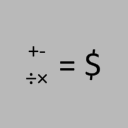Out of this universe: no thing is as big as a googol
No, it’s not a typo — googol is a number equal to 1 followed by 100 zeros: 10¹⁰⁰. Google, the company name was inspired by googol and how big it is (the reason for the misspelling of the company name is a bit of a mystery).
While googol might just seem like another number, it’s much bigger than that — this number is so massive it defies our everyday understanding.
What is a googol?
A googol is written as a 1 followed by one hundred zeroes, or in exponential form, 10¹⁰⁰. Here it is written out:
10,000,000,000,000,000,000,000,000,000,000,000,000,000,000,000,000, 000,000,000,000,000,000,000,000,000,000,000,000,000,000,000,000,000
Is there anything we come across that is that large? Let’s compare:
· There are 8 billion people on Earth: 8x10⁹. Not close.
· Each human is made up of up to 100 trillion living cells: 10¹⁴.
· Total potential number of living human cells on Earth is 800 billion trillion: 8x10⁹ x 10¹⁴ = 8x10²³.
· Total number of living cells (including all animals, insects, bacteria) on Earth? 10³⁰. Still not close.
· How about grains of sand on Earth? 10¹⁹. We’ve taken a step back here.
· Let’s go really big — how about number of atoms on Earth? Scientists estimate 10⁵⁰. Getting closer, but still extremely far off.
Going intergalactic
Even if we count every atom on our planet, we’re nowhere near 1 googol. So, let’s go as big as we can and look at the universe.
· Our galaxy contains 1x10¹¹ to 4x10¹¹ stars.
· There are over 1x10¹¹ galaxies in the observable universe.
· That should get us close, right? Well, the estimated number of atoms in the observable universe is 10⁸⁰. We’re still not close to a googol!
· What if we count subatomic particles? Since about 75% of the observable universe is hydrogen, and about 25% helium, with a negligible fraction of larger atoms, we’re still stuck at around 10⁸⁰, but let’s get down to quarks and we get to 10⁸¹.
Our observations of the universe are limited by the speed of light, and thus consist of the “observable universe.” The “full” universe is estimated to be much, much larger. Lower end estimates of the “full” size of the universe are 250 times larger than our observable universe. Higher end estimates are trillions of times larger (10¹²). If we assume the high end, then we get to about 10⁹³ quarks in the whole universe. We would need the full universe to be 1 million trillion times larger than our observable universe to get to an estimate of 10⁹⁹ quarks in our entire universe (i.e. if the part of the universe we are able to observe is 0.00000000000000001% of the entire universe’s size, we still don’t get to 1 googol quarks.
How long to count from 1 to googol? There isn’t enough time.
Unfortunately, it’s practically impossible for a modern computer to directly count to a googol. If a super-powerful computer could count a billion numbers per second, it would still take roughly 3.17 x 10⁸³ years to reach a googol. That’s far, far, far longer than the estimated age of the universe, which is 14 x 10⁹ years! Some scientists estimate that the universe could end in 22 billion years (22 x 10⁹). So it would be impossible to have enough time to ever reach 1 googol.
Googol is so large, it might as well be infinity.
The origin of googol
The term “googol” was invented in 1920 by a nine-year-old boy named Milton Sirotta. Milton’s uncle, Edward Kasner, was a prominent American mathematician. Kasner wanted a word to describe a truly enormous number, specifically 1 followed by 100 zeros. Milton came up with “googol”, and the term stuck.
Next: where can we use googol?
